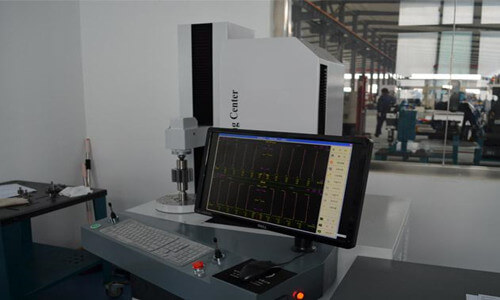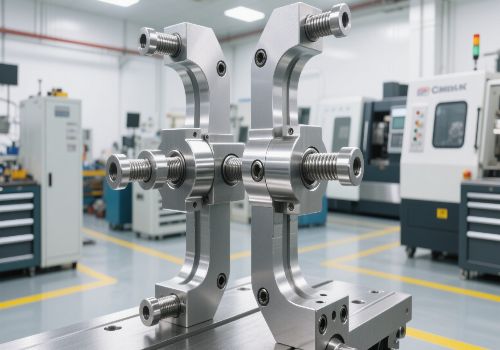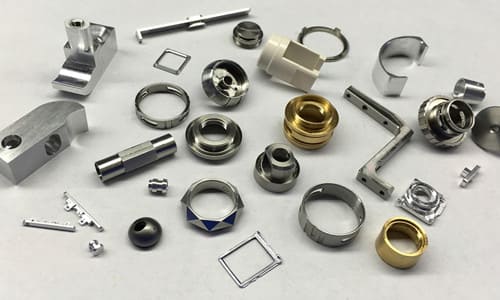A measuring tool is a tool that measures the size, angle, and curvature of a workpiece during machining or after inspection. There are many types of measuring tools, such as vernier calipers, spiral micrometers, universal angle rulers, needle gauges, lever dial indicator, gauges, feeler gauges and coordinate measuring instruments.
Vernier caliper
A vernier caliper is a gauge that measures the length, inner and outer diameter, and depth of a workpiece. The vernier caliper consists of a main ruler and two parts of the vernier attached to the main ruler and slidable. The main ruler and the cursor each have a pair of movable claws, which measure the inner diameter and the outer diameter respectively, and the measuring rod at the tail can measure the depth. When reading, take the sum of the reading on the main ruler and the reading on the cursor, the minimum can be accurate to 0.02 mm.
Spiral micrometer
The spiral micrometer is a gage that measures the length of the workpiece. It is more precise than the vernier caliper and can be accurate to 0.01 mm. It is estimated to be 0.001 mm, so it is also a micrometer. The measuring range of the spiral micrometer is small, usually only a few centimeters. It consists of a frame, a fixed sleeve, a movable sleeve, a measuring screw, a knob and a fine adjustment knob. The pitch of the screw sleeve is 0.5 mm, the movable sleeve and the screw are integrated, and the periphery is equally divided into 50 divisions. The number of full turns of the screw is measured by a scribe line spaced 0.5 mm apart on the fixed sleeve. The less than one turn is measured by the scribe line around the movable sleeve, and finally a decimal is estimated based on the accurate measurement results.
Universal angle ruler
The universal angle ruler is a gauge for measuring the inner and outer angles of a workpiece during machining. The outer angle range is in the range of 0 to 320 degrees; the inner angle range is in the range of 40 to 130 degrees. The universal angle ruler is composed of a main ruler and a cursor. The main ruler line is 1 degree per grid, and the ruler’s engraved line is 29 degrees of the main ruler, and is divided into 30 divisions, so the cursor engraving line is 29/30 per division, the accuracy of the reading can be accurate to 1/30 degrees, which is 2 points.
Needle gauge
The needle gauge is a gauge that measures the workpiece aperture, hole pitch, internal thread diameter, curved groove width, and die size in mechatronic machining. The needle gauge is often used to check the position, measure the size of the hole, check the distance between the two holes, or use it as a pass gauge and a depth of the measuring hole. Because the needle gauge is an internationally advanced laser detector for detecting workpieces, it is widely used in various high-tech fields such as electronic boards, circuit boards, molds, precision machinery manufacturing, etc., Therefore, it is also regarded as a necessary inspection tool for the standardized inspection of holes.
Leverage dial indicator
The lever dial indicator is a measuring instrument with a small measuring range, the measuring range is not more than 1 mm, and the indexing value is 0.01 mm. The measuring instrument adopts a dial with a symmetrical scale, and has small volume and high precision, and is suitable for measuring workpiece shape error, actual size, and small holes, grooves, hole distances, coordinate sizes and the like. When using the lever dial indicator, care should be taken to make the direction of measurement movement perpendicular to the center line of the probe to avoid errors.
Gauges
The gauge is a length measuring tool that cannot indicate the magnitude and can only judge whether the measured length is qualified according to the matching gap with the workpiece to be tested, the degree of light transmission, or whether it can pass the condition of the workpiece. The gauge controls the upper and lower limits of the size or specification and generally covers all tolerance zones.
Feeler gauge
The feeler gauge is also known as a microchip or a thin gauge, which is a gauge for checking the gap. The cross section is a right-angled triangle, and the scale is marked on the oblique side. The length of the short side is directly expressed on the oblique side by the sinusoidal function of the acute angle, so that the size of the measured seam can be directly read out.
Three coordinate measuring instrument
A three-coordinate measuring instrument is a measuring instrument for measuring parameters such as geometry, length and circumferential indexing of a workpiece in a hexahedral space. It can be defined as “a detector that can move in three directions”, which can move on three perpendicular guides, transmit signals by contact or non-contact, and calculate the coordinates of each point of the work piece by data processor or computer, etc. The coordinate measuring machine can be used to measure the dimensional accuracy, positioning accuracy, geometric accuracy and contour accuracy of the workpiece.











